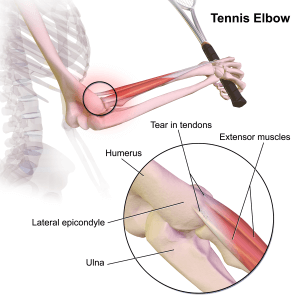概要
One of the fascinating feats of the human body is how it maintains a stable internal environment despite environmental changes. Organs of the body need to be nourished with the correct amount of electrolytes such as Sodium, Potassium, and Calcium to function correctly. A slight variation in the Potassium concentration could lead to life-threatening arrhythmias and even death. The kidneys play a significant role in maintaining this internal environment, emphasizing electrolyte and fluid balance.
Acute Kidney Failure is derangement or cessation of kidney function. The kidneys lose the ability to maintain the osmotic and electrolyte balance due to glomerular injury that affects the excretion of salts, water, and toxic waste materials. In other words, the kidneys fail to remove water, electrolytes, and toxins from the body. This leads to a drastic rise in the level of body fluids and abnormal electrolyte concentrations in blood. The excess of electrolytes and toxins in the body is life-threatening.
Acute Kidney Failure is also known as Acute Kidney Injury and Acute Renal Failure. Acute Kidney Failure is common in hospitalized patients. The manifestation of Acute Kidney Failure takes hours to weeks depending on the severity of the causative factor.
徴候と症状
A list of the most common signs and symptoms of acute kidney failure is provided below:
1: Generalized edema of the body due to fluid retention
2: Pain in the abdomen
3: Generalized fatigue leading to slow and sluggish movements
4: Urea retention leading to odor in the breath
5: Fluid retention and electrolyte imbalance can lead to brain edema, which affects the mental status
6: Frequent bruising due to oedematous condition of the body
7: Appetite may be reduced
8: Blood in the stools in some cases
9: Bleeding time is increased
10: Serious damage to the brain may lead to seizures
11: Nausea
12: Reduced sensitivity of the skin of hands and feet
危険因子
Acute Kidney failure always occurs as a result of a previous insult to the kidneys. The conditions that increase the risk of acute kidney failure are in the following section.
1: Old Age
Similar to every other organ of the body, kidneys and glomeruli age with time. The body loses its ability to tolerate harmful insults such as infections and the ability to repair itself. Therefore, old age is considered to be a significant risk factor for acute kidney injury.
2: Hospitalization
Acute kidney failure is seen more commonly in hospitalized patients. Patients under intensive care and those undergoing chemotherapy are at the highest risk. This might be due to the toxic effects of drugs medications used.
3: Diabetes
Diabetic nephropathy is a common outcome of diabetes. Long-term hyperglycemia can damage the blood vessels supplying the kidneys and can lead to acute kidney failure.
4: Kidney Disease
Kidney diseases such as pyelonephritis (infection of the kidney), pyogenic abscess (abscess of the kidney), glomerular nephritis (inflammation of the kidney), and kidney stones can damage multiple glomeruli and cause acute kidney failure.
5: Cancer Chemotherapy
Cancer chemotherapy drugs produce a lot of toxins during their metabolism. Most, if not all, of the products of metabolism of these drugs, are excreted through the kidneys. Their accumulation or even the passage through the kidneys in significant doses can damage the kidneys. They damage the lining of the renal tubules leading to an increased risk of acute kidney failure.
6: Liver Disease
Liver disease may hinder the venous return of the kidney. A pooling of deoxygenated blood in the renal capillaries can prevent arterial blood from reaching the capillaries leading to acute kidney failure.
合併症
If acute kidney failure is not treated immediately, it can lead to severe complications.
1: Fluid Overload In Lungs
Increased fluid retention and volume overload of the system causes fluid to seep into the lungs and cause pulmonary edema (fluid accumulation in lungs). Pulmonary edema severely compromises lung function and causes difficulty in breathing and shortness of breath.
2: Heart Failure
Volume overload often overwhelms the capacity of the cardiovascular system leading to hypertension. The heart will not beat against a very high systemic pressure, leading to heart failure.
3: Chest Pain
Excess fluid in the pericardial sac causes inflammation of the pericardium giving rise to sudden pinching chest pain. The pericardial sac is a layer of fluid that outlines the heart. Increased fluid in the pericardial sac affects the heart’s capacity to fill up and beat.
4: Chronic Renal Failure
If the situation is not resolved and the kidney tissues do not receive adequate blood supply, permanent necrosis of the renal tissues can occur. When the disease progresses beyond a limit, it cannot be reversed. The ultimate result is permanent damage to the kidneys.
5: Permanent Brain Damage
Fluid retention leads to brain edema. Brain edema compresses blood vessels of the brain. If the situation prevails, brain cells can undergo necrosis, leading to permanent damage.
診断
The diagnosis of acute kidney failure is based on presenting complaints, physical examination, and lab reports.
Physical Examination
The doctor will look for abdominal tenderness (pain on touch) and edema of the legs and feet during the physical examination. Auscultation of the lungs will show crackling sounds of the lungs signifying pulmonary edema. The blood pressure and pulse rate are also assessed in physical examination.
Lab Tests
Follow tests are done to confirm the diagnosis of acute kidney failure.
1: Blood Urea Nitrogen
2: Serum sodium level
3: Serum potassium level
4: eGFR is also checked
5: Creatinine Clearance rate
6: Serum Creatinine level
Imaging
The abdominal imaging of the kidneys might be needed to look for any obstruction of the urinary tract. An ultrasound of the abdomen is usually preferred for confirmation of acute kidney failure. However, other imaging techniques such as X-rays and MRI can also be used.
処理
The treatment of acute kidney failure aims to restore the function of the kidney. Hence, the treatment strategy will vary according to the cause of kidney failure. The available treatments of acute kidney failure are in the following section.
1: Diuretics and Antibiotics
Antibiotics are prescribed to prevent any infection. The purpose of diuretics is to hasten the process of fluid and electrolyte removal from the body. However, diuretics are not used in anuric patients (those with no urine output).
2: Diet and fluid restriction
Fluid and diet intake are restricted as long as the condition does not become stable. The purpose of this restriction is to prevent fluid overload from worsening.
3: Dialysis
Dialysis is a temporary option for severe acute kidney failure. In dialysis, fluid/ blood is passed through an artificial clearing machine. It is crucial when the potassium level is too high. It is also necessary when there is the involvement of the central nervous system.
防止
Some of the lifestyle changes reduce the occurrence of conditions that leads to renal failure. The lifestyle changes include;
1: A regular exercise
2: A healthy diet
3: Smoking and alcohol cessation
4: Maintaining an ideal weight
5: Avoiding any nephrotoxic drugs and drugs of abuse.
1: Schrier, R. W., Wang, W., Poole, B., & Mitra, A. (2004). Acute renal failure: definitions, diagnosis, pathogenesis, and therapy. The Journal of clinical investigation, 114(1), 5–14. https://doi.org/10.1172/JCI22353
2: Makris, K., & Spanou, L. (2016). Acute Kidney Injury: Definition, Pathophysiology and Clinical Phenotypes. The Clinical biochemist. Reviews, 37(2), 85–98. https://www.ncbi.nlm.nih.gov/pmc/articles/PMC5198510/
3: Gameiro, J., Fonseca, J. A., Outerelo, C., & Lopes, J. A. (2020). Acute Kidney Injury: From Diagnosis to Prevention and Treatment Strategies. Journal of clinical medicine, 9(6), 1704. https://doi.org/10.3390/jcm9061704
4: Beige, J., Kreutz, R., & Rothermund, L. (2007). Acutes Nierenversagen: Pathophysiologie und klinisches Management [Acute renal failure: pathophysiology and clinical management]. Deutsche medizinische Wochenschrift (1946), 132(48), 2569–2578. https://doi.org/10.1055/s-2007-993100
5: Goyal, A., Daneshpajouhnejad, P., Hashmi, M. F., & Bashir, K. (2021). Acute Kidney Injury. In StatPearls。 StatPearlsパブリッシング。 https://pubmed.ncbi.nlm.nih.gov/28722925/
6: Zhang, L., Wang, M., & Wang, H. (2005). Acute renal failure in chronic kidney disease–clinical and pathological analysis of 104 cases. Clinical nephrology, 63(5), 346–350. https://doi.org/10.5414/cnp63346
Health Literacy Hub Webサイトで共有されるコンテンツは、情報提供のみを目的として提供されており、州または国の資格のある医療専門家が提供するアドバイス、診断、または治療に代わるものではありません。読者は、他の情報源から提供された情報を確認し、健康に関して質問がある場合は資格のある開業医のアドバイスを求めることをお勧めします。 Health Literacy Hubは、提供された資料の適用から生じる直接的または間接的な結果に対して責任を負いません。



